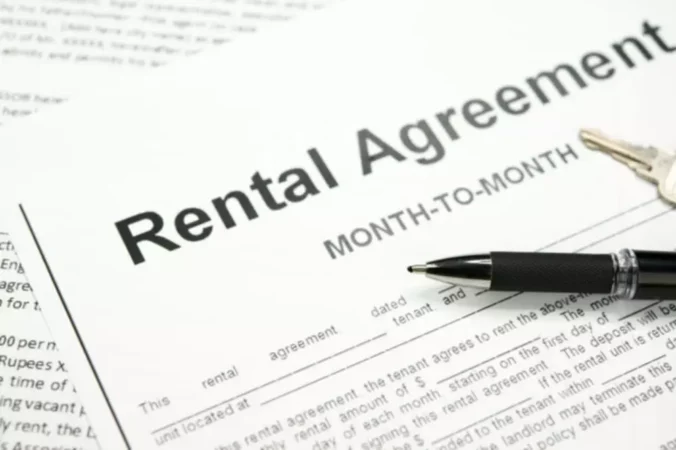Overview
If you want to use a piece of machinery, equipment, and so on, you have two options: you can buy the asset or you can find someone who can lease it to you. Lease is an integral part of the business activity of a modern enterprise. Most businesses have resorted to leasing at least once during the time of their operations. After all, it is convenient for an organization to lease an asset that would be impractical to buy “permanently”.
Recently, leasing took a completely new form. Now, numerous companies lease cloud services. Cloud service is a new IT consumption model where there is no need to purchase your own hardware or software. You can get it either for free or for a reasonable fee, by consuming exactly as much as you need.
Besides offering something for lease as its main activity, the lessor can also make money on those assets that are not used in business activities and temporarily give them to others. In either case, both parties win because one saves money by leasing instead of investing into the expensive asset and the other makes a profit from offering a lease option.
Accordingly, in order to carry out economic activities, an enterprise does not have to acquire its own assets, spending a hefty amount of its funds on them. It is enough to take the desired object for lease. This also makes accounting somewhat simpler. The main thing is not to forget to pay the specified fee to the lessor in a timely manner.
When it comes to lease accounting, it is important to know that there are two major types of lease that you might need to keep an account of. The first classification is an operating lease. The other type is known as financial. How to reflect this in the accounting? Let’s take a closer look at how each party would do lease accounting and associated transactions in their accounting records.
Lease Accounting
Operating Lease
This is a type of rental agreement or contract in which the lessor carries all the risks and gets all the benefits (e.g. asset appreciation). The contract is typically short-term. The lessor is still the owner of the object. When it comes to accounting for such a type of lease, in short, we can say that the bookkeeper will record lease payments as operating expenses in the accounting books.
Although previously this was an off Balance Sheet item, under the new IFRS rules, now operating leases are recorded as right-of-use assets and lease liabilities. This means that when an agreement is initially signed, the bookkeeper adds a Right of Use asset and a corresponding Lease liability on the Balance sheet. Afterward, a check is written for the agreed-upon amount of payment on annual or any other basis in cash every for the whole period it uses the asset. In other words, if you want to lease an asset, you are required to treat most as if you had purchased those assets using debt.
Accordingly, now lease accounting for business owners who lease items typically involves also calculation interest, depreciation, and principal repayments for this lease even though it is a lease and not actually a traditional debt. Under the U.S. GAAP companies record a simple Rental expense.
Financial Lease
If the lease is classified as financial, then the lessee is considered an owner of the assets as far as accounting goes with all the associated risks and benefits. Accordingly, the last can show depreciation while lease payments can be treated as interest. The Balance sheet report of the lessee will have the leased item listed under assets.
When it comes to expenses and running costs, these fall mainly on the lessee, who bears all the expenses. Common expenses you might see in the accounting records of the lessee would be maintenance, taxes, and other asset-related expenses that a business would incur when leasing. Moreover, it also bears the obsolescence risk.
Lease Advantages and Disadvantages
It might seem unreasonable to pay a lease and not have anything in the end. However, there are several advantages to choosing to lease an asset instead of purchasing it. In most cases, assets that are leased cost a significant amount of money. Many companies simply do not have the required amount of cash just sitting around to purchase these items. Thus, they need to take on a loan.
When a company decides to take on a loan and purchase equipment, for instance, not only its assets on the Balance sheet are going to go up, but also its liabilities. In turn, the company’s solvency ratios will also go up, which is not a good thing. Investors and creditors will find this company less attractive. However, another option to save capital and other financial resources that can be used for other business purposes is to lease. As we mentioned before, companies can possibly avoid disclosing the asset on the Balance sheet.
Instead, they will only have a leasing expense on their Income statement and have disclosure in the notes to the financial reports. When investors look at the Balance sheet, the solvency ratios are going to stay the same as they did before the lease. At the same time, the company gained access to use expensive equipment that is going to bring it extra income.
In addition, leasing is advantageous to both parties from a tax perspective. Depending on the lease classification, the lessor might be able to deduct depreciation to lower its taxable income. The lessee can deduct the lease as operating expenses to also lower the income it would need to use for calculating tax payments. Unfortunately, these advantages are applicable only when your lease qualifies as an operating lease and your business follows U.S. GAAP rules because the IFRS with recently updated rules where the operating lease is becoming more and more like the financial lease.
When it comes to long-term leases and the company leases assets for the majority or the whole period of its useful life, it can be said that the company owns the asset because once it returns the item to its owner, the salvage value will be zero or very close to zero.
Similarly to a situation when an organization has to record the purchase of a long-term asset and it uses up most of its value (so it is fully amortized), it is only reasonable that the lessee lists the asset leased for a significant period of time on its books and depreciates it as if it owned it. This way, the investors will not be misled when they evaluate the company’s reports.
Nonetheless, the lease is a great option when it comes to the rapid growth of a business. After all, the ability to use the production equipment, machinery, and other assets that are typically leased is more important than the actual ownership of these assets. With a quick overall growth, the business will soon be able to buy some of the long-term assets on its own. After all, it will have more working capital available for its operations with the lease option. It is also worth noting that the lease provides more flexibility compared to taking a loan.
Finally, we want to mention some other reasons the lease might not be a good option for a business. First of all, it is worth remembering that a premature lease termination typically comes with high penalties. In addition, it is not a good idea to lease an asset that is likely to appreciate over time because the lessee does not really own anything, so the benefit from the increase in the value of the leased asset will go to the lessor.



















